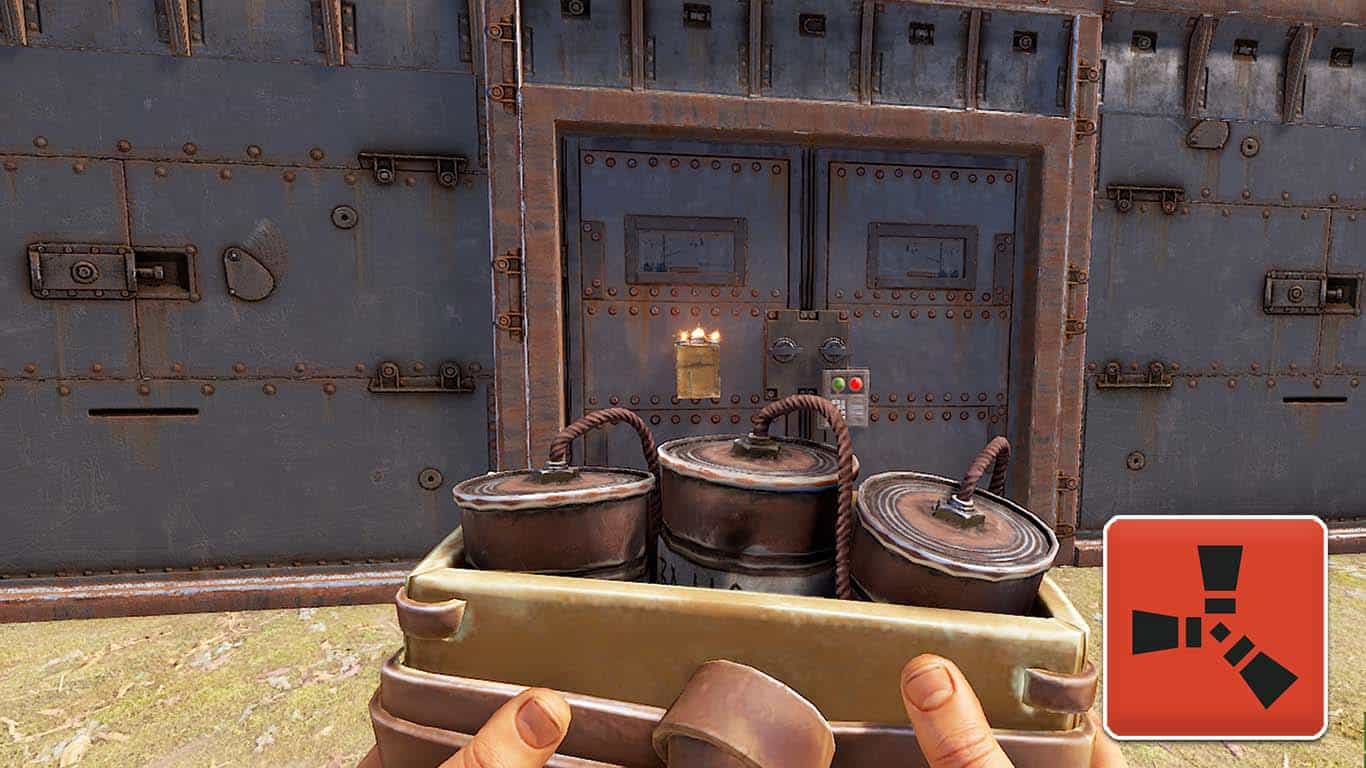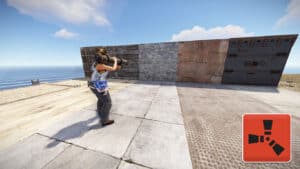Rust is known for being an unforgiving game with a cold-blooded community. The moment you start the game on a crowded server, you will instantly be either shot or beaten with a rock.
Even if you get away, the base that you build will always be in danger, as players have access to a limitless source of explosives and weapons.
Recommended Read: What Should You Do First in Rust?
You can always get your revenge on all these raiding parties, but you will need some kind of explosive that is available in the early game.
To make a satchel charge in Rust, you will need to approach your workbench and use 1 ft of rope, 1 small stash, and 4 beancan grenades.
Table of Contents
- How to Make Satchels in Rust
- How to Get a Satchel Charge in Rust
- How to Use Satchel Charges to Raid in Rust
How to Make Satchels in Rust
A satchel charge in Rust requires a lot of preparation and can very often end up doing nothing. However, it is the best choice for raiding in the early game.
To craft a satchel charge in Rust, you will first need to research and unlock the following items at the workbench and research bench:
- Salvaged Hammer
- Pickaxe
- Salvaged Sword
- Compound Bow
- Mace
- Salvaged Cleaver
- Waterpipe Shotgun
- Flare
- Pistol Bullet
- Revolver
- Beancan Grenade
This is a very long list, but you should be able to find most of these items by scavenging monuments and the necessary scraps in the process.
In general, to make a satchel charge, you will need around 480 sulfur, 720 charcoal, 80 metal fragments, 10 cloth, and 1 ft of rope.
The beancan grenades are the most expensive part of the process, as they require 60 gun powder and 20 metal fragments to craft. You can find your first beancan grenade to research it by either farming scientists or hoping that a random crate will have one.
How to Get a Satchel Charge in Rust
To craft a satchel charge you will also need to first get your hands on one and research it at the bench. Your most likely place to find one is at a supply drop.
Pay attention to every plane that goes over the island since you will otherwise lose the loot to other players.
Otherwise, farming scientists is your best bet. They all have an incredibly low chance of dropping a satchel charge.
How to Use Satchel Charges to Raid in Rust
Now that you have satchel charges in Rust, you will need to know how to use them. In theory, the satchels are relatively simple to use. Equip one and throw it on a door or wall. Now, wait for it to explode.
Unfortunately, the satchel charge is extremely unpredictable, and it can fail to explode very often. You also have to be careful if you pick them up after a dud, as they can reignite in your hands.
The satchels are very dangerous, but they will get the job done in Rust’s early game. Here is the exact amount of satchel charges you would need to use for most of the normal types of doors and walls:
- Wooden Wall – 3 Satchel Charges
- Stone Wall – 10 Satchel Charges
- Sheet Metal Wall – 23 Satchel Charges
- Wooden Door – 2 Satchel Charges
- Sheet Metal Door – 4 Satchel Charges
- Garage Door – 9 Satchel Charges
- High External Walls – 10 Satchel Charges
We haven’t listed some of the higher-tier materials since the satchel charge becomes extremely ineffective against them. As you can see from the Sheet Metal Wall example, you will need 23 to completely destroy one.
In theory, you should only use these for wooden and metal doors. For a wooden door, you will need around 480 gun powder and 960 sulfur to make enough satchels to get in. For a sheet metal door, you will need 960 Gun powder and 1920 sulfur.
So, besides the early game, where wooden walls and doors and sheet metal doors are the norms, you shouldn’t use satchels to raid bases. Rockets and timed explosives should become the new basic raiding equipment.
That’s everything you need to know about how to make a satchel charge in Rust!
Have any input or suggestions for this guide? Let us know in the comment section below.




